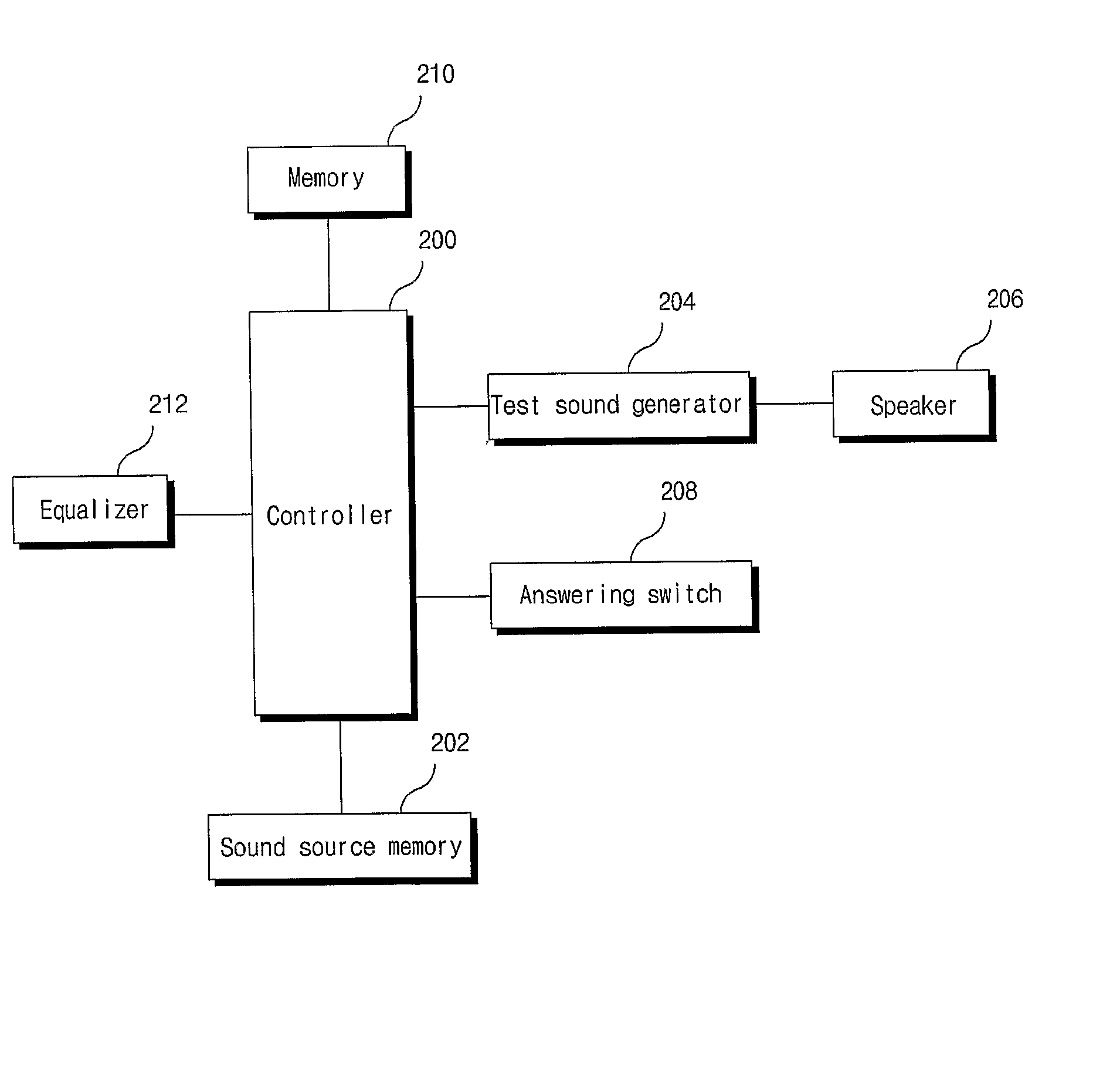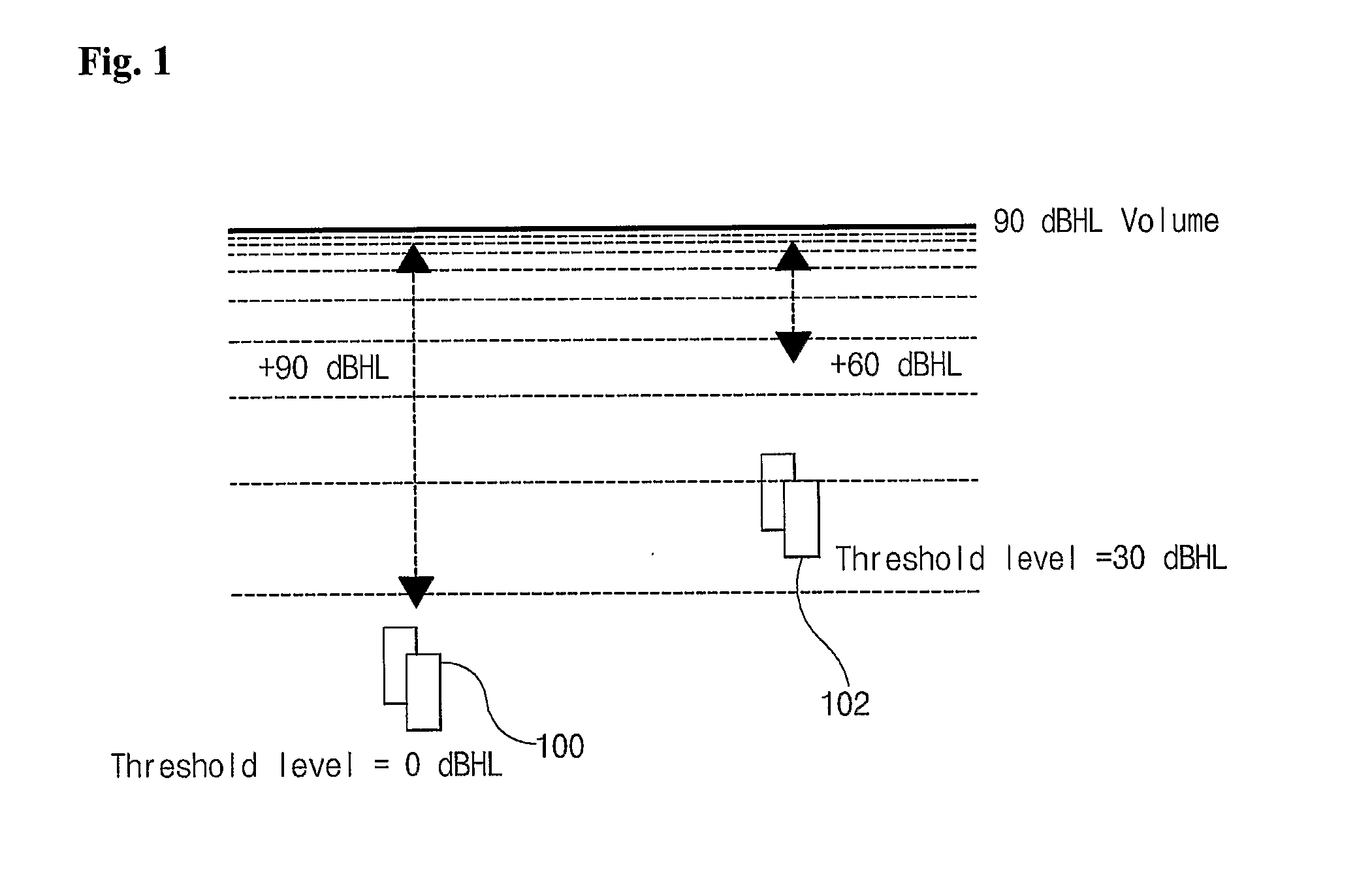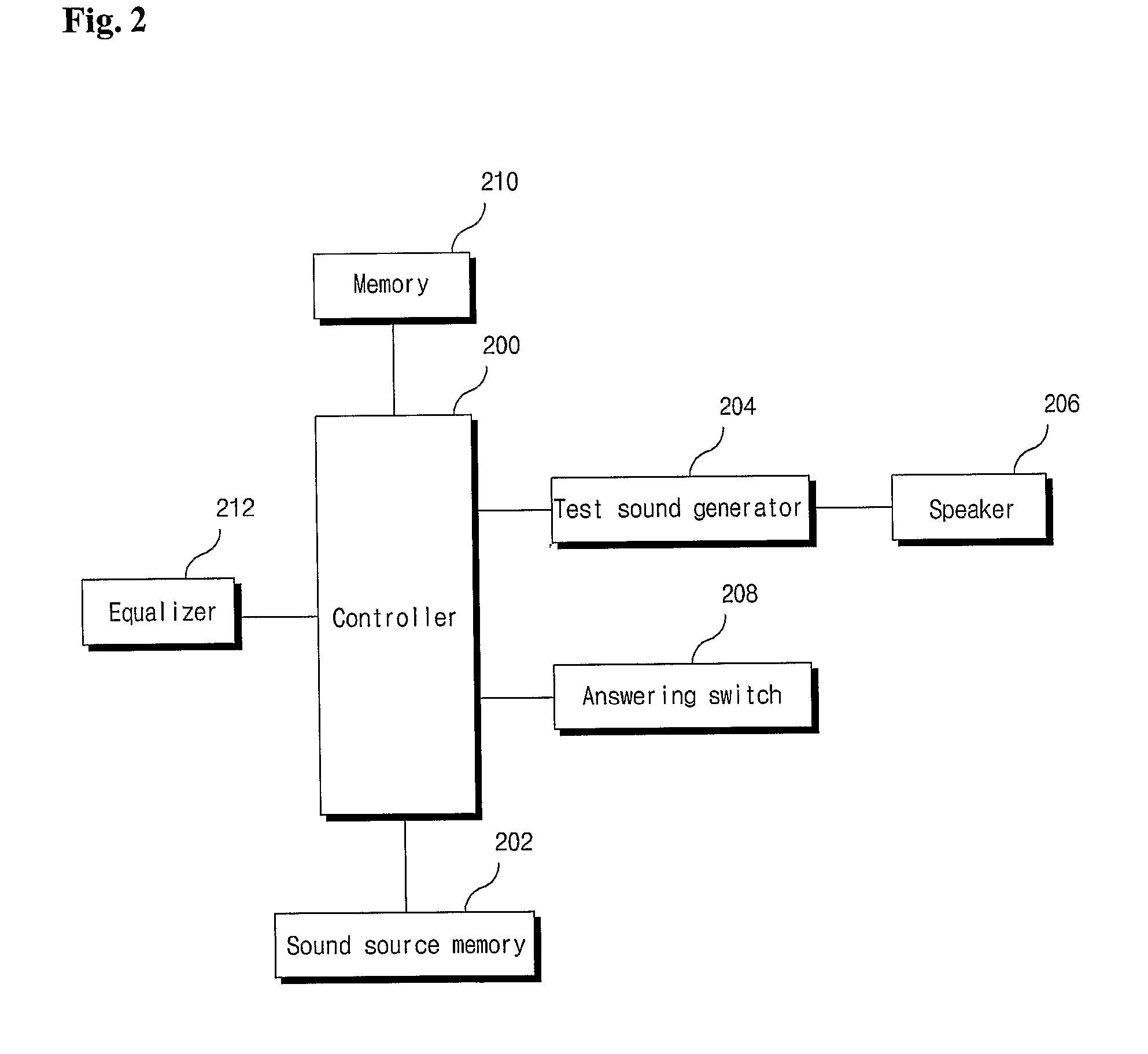Equalization Apparatus and Method Based on Audiogram
a technology of equalization apparatus and equalization method, applied in the direction of digital signal error detection/correction, deaf aid adaptation, instruments, etc., can solve the problems of hearing loss, severe hearing loss or profound hearing loss, hearing loss, etc., to achieve optimal sound, optimal sound, and optimal hearing protection function
- Summary
- Abstract
- Description
- Claims
- Application Information
AI Technical Summary
Benefits of technology
Problems solved by technology
Method used
Image
Examples
Embodiment Construction
Technical Problems
[0026] Accordingly, the present invention is directed to an equalization apparatus and method based on audiogram that substantially obviates one or more of the problems due to limitations and disadvantages of the related art.
[0027] An object of the present invention is to provide an equalization apparatus and method based on audiogram, in which an optimal sound and an optimal hearing protection function can be given to a user while minimizing audiogram test time.
[0028] Another object of the present invention is to provide an equalization apparatus and method based on audiogram, in which time required for audiogram test can be minimized even in case that a frequency band is subdivided.
[0029] Another object of the present invention is to provide an equalization apparatus and method based on audiogram, in which an optimal test start sound can be set automatically without manual manipulation of a user in selecting the test sound, so as to reduce time required for ...
PUM
| Property | Measurement | Unit |
|---|---|---|
| frequency | aaaaa | aaaaa |
| frequency | aaaaa | aaaaa |
| frequency band | aaaaa | aaaaa |
Abstract
Description
Claims
Application Information
 Login to View More
Login to View More - R&D
- Intellectual Property
- Life Sciences
- Materials
- Tech Scout
- Unparalleled Data Quality
- Higher Quality Content
- 60% Fewer Hallucinations
Browse by: Latest US Patents, China's latest patents, Technical Efficacy Thesaurus, Application Domain, Technology Topic, Popular Technical Reports.
© 2025 PatSnap. All rights reserved.Legal|Privacy policy|Modern Slavery Act Transparency Statement|Sitemap|About US| Contact US: help@patsnap.com



